Brown Lice and Lice Eggs & Brown Hair with Lice
Question:
Can head lice and lice eggs be brown?
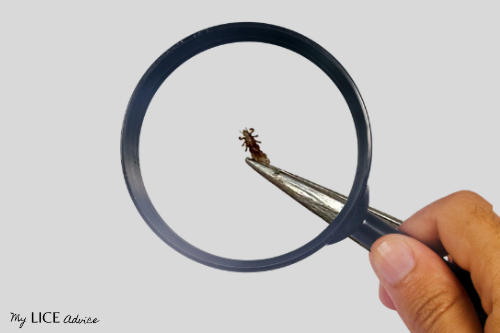
Answer from a Lice Expert:
Most websites say that lice are white or tan, but if you are finding brown bugs and brown nits in your hair, you are not alone. Yes, both head lice and lice eggs (nits) can be brown. In this article, I explain what it means if you're finding brown lice or brown nits in your child's hair, and if what you're finding is truly head lice versus another type of bug.
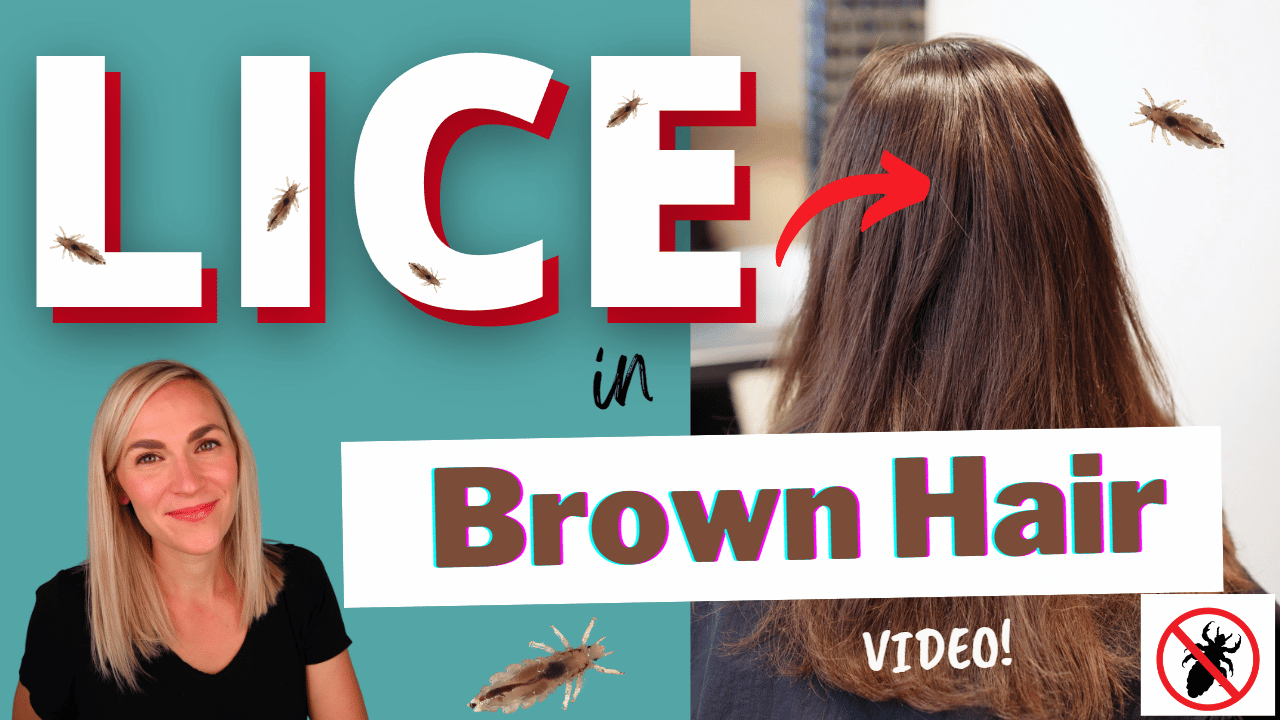
This article I covers the following:
Let me introduce myself...
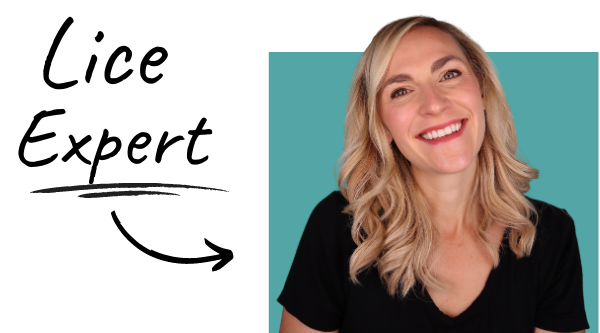
Hi there! I'm Theresa, I'm a lice expert, lice coach, and Registered Nurse. I help people with lice every day! You can get rid of lice in ONE DAY at home by using the same proven professional technique that I use in my lice center.
Just follow the step-by-step videos and be done with lice by the end of the day.
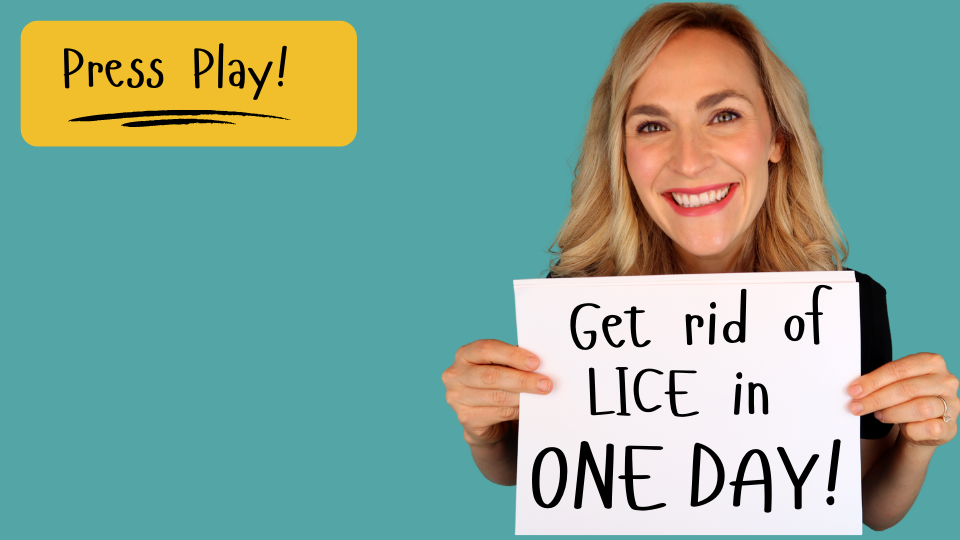
Appearance of Head Lice
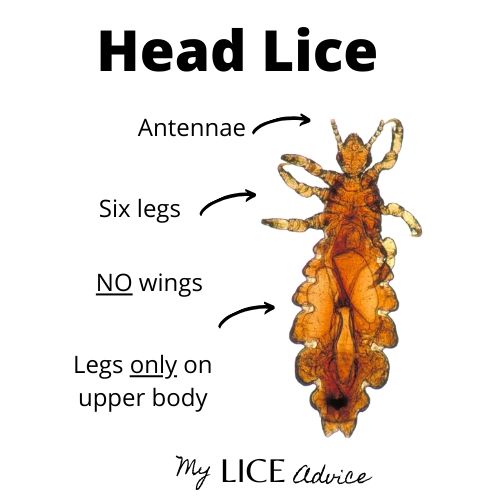
The defining characteristics of head lice are:
- 6 legs attached to the upper ⅓ of the body, not connected to the large abdomen
- No wings
- Adult lice are typically light to dark brown on brunettes
- Nymph (tiny, “baby stage” lice) are translucent/transparent with a dark stomach.
- Black stomach/intestines often visible through the translucent body (larger after feeding)
- Antennae
- Tapered/claw-like legs
Brown Lice
Lice are tiny experts at blending in with hair. When lice are first born, they are almost invisible, and in adulthood, they are only about the size of a sesame seed. To make things even more complicated, lice bugs usually match the color of hair they are infesting!
In my lice center, I have seen multiple colors of head lice, including brown, black, white, and even RED head lice. Here's a picture of just a few of the different colors of head lice I've found in individuals' hair.
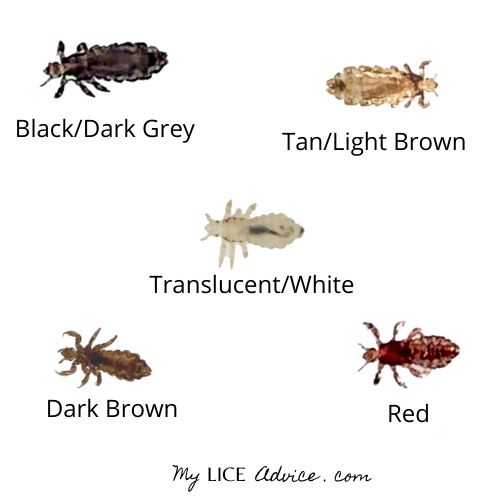
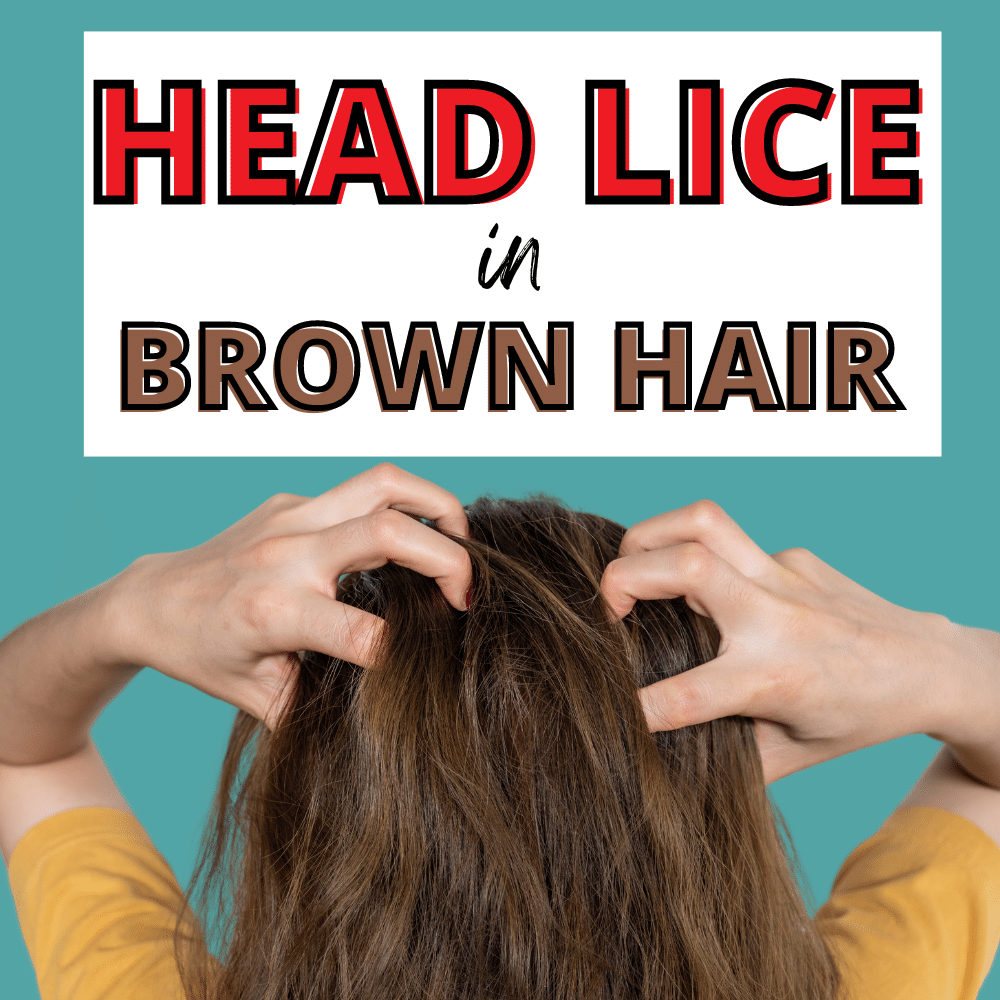
Head Lice in Brown Hair
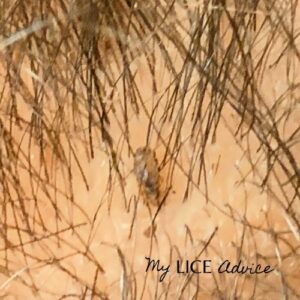
Head lice are small bugs that live exclusively in hair. They are the only parasite that infests human hair, so if you do find bugs in your children’s hair, it’s likely they have head lice.
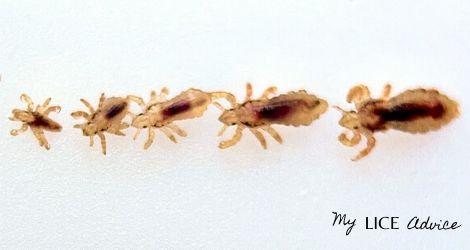
When lice are first born, they are tiny and translucent, almost entirely see-through.
As head lice age into adults, they become darker and more visible. The color of adult head lice typically matches the color of the hair they are infesting. You can expect a brunette to have darker head lice than a blond. Adult head lice in brunettes typically are brown.
Super Lice
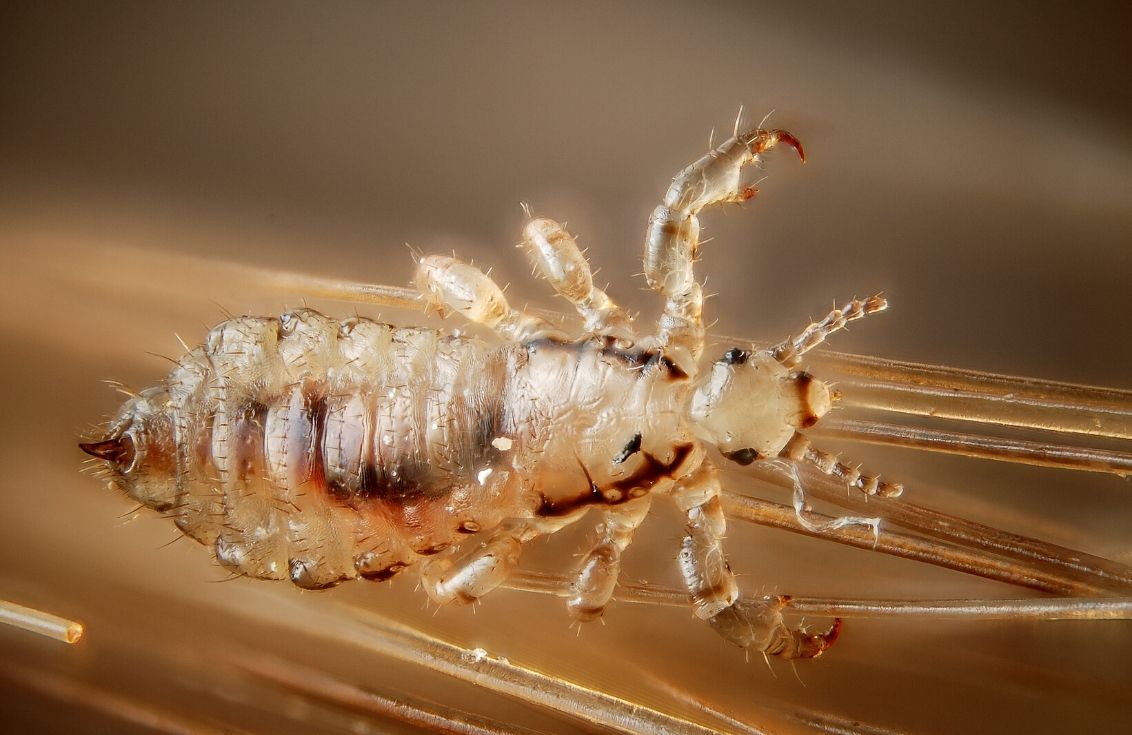
A new strain of head lice, super lice is making big news these days. Super lice and regular head lice are virtually the same bugs, except super lice has mutations that make them very difficult to kill and get rid of. These super lice are becoming the “new” strain of head lice. Super lice can be brown as well.
Is it Super Lice?
The most recent studies show that almost all lice these days are super lice. Head lice and super lice look and act identically; the only difference is that you can't kill super lice with the old over-the-counter treatments.
Do Other Brown Bugs Live in Hair That Are Not Lice?
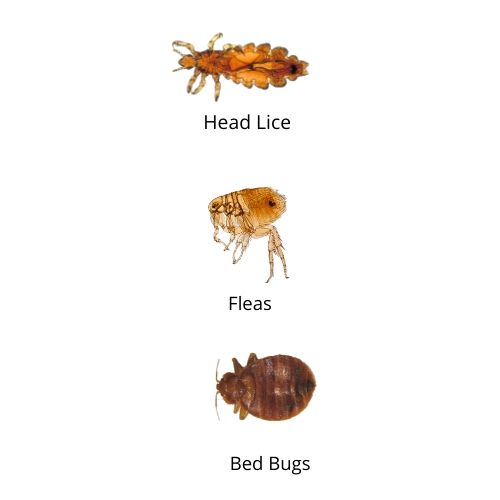
Fleas
If you have pets, then there is a chance that you can find fleas in your child’s hair. It's not typical that a child would have a “flea infestation” because fleas do not prefer humans. But, I have found fleas in several children over the years. I end up treating those children with fleas in the same way as I treat head lice- with a super lice treatment.
You can tell the difference between fleas and lice because fleas have hind legs that jump, whereas head lice do not jump and do not have hind legs. Head lice’s legs are all on the upper half of their bodies.
Bed Bugs
One other type of bug that could be in a child’s hair is bed bugs, although bed bugs do not infest hair. Bed bugs typically live the bed, and in furniture near the bed. They usually only come out to feed at night on the skin, not in the hair.
You can tell the difference between head lice and bed bugs because bed bugs are very flat with a shield-shaped body.
Brown Lice Eggs/Nits
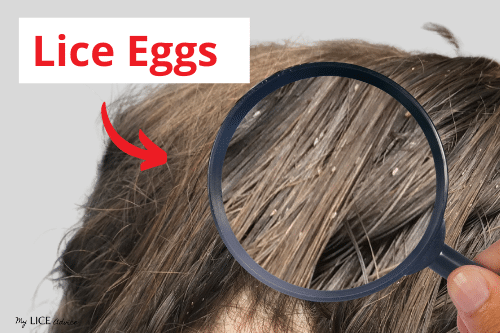
Lice eggs and nits are the same thing.
To start off let's get something straight... Nits and lice eggs are the same thing! Don't make this more complicated then it needs to be. The two words (nits and lice eggs) will be used interchangeably in this article.
What Do Nits Look Like In Brown Hair?
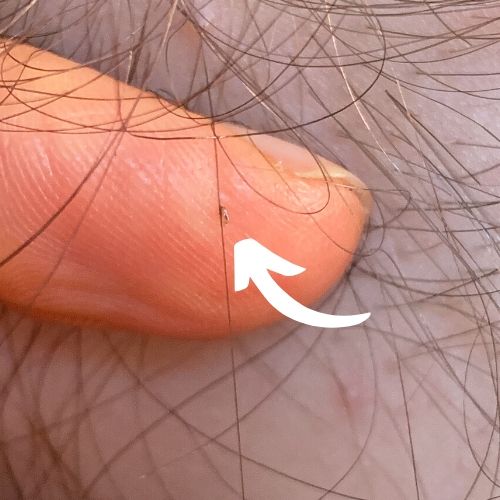
Lice eggs are tiny (about the size of a poppyseed), and they blend in pretty well with hair. If you aren’t looking closely, you are likely to miss them. Lice eggs and dandruff are often mistaken for one another, but some of the key differences are that lice eggs are tear-drop shaped and glued to the side of the hair strand.
The tell-tale sign that what you are finding is a nit is that a nit cannot be flicked, blown, or brushed away. Aside from a high-quality lice comb, the only way to remove a lice egg from the hair strand is to squeeze it between two fingers and manually drag it down the entire hair strand.
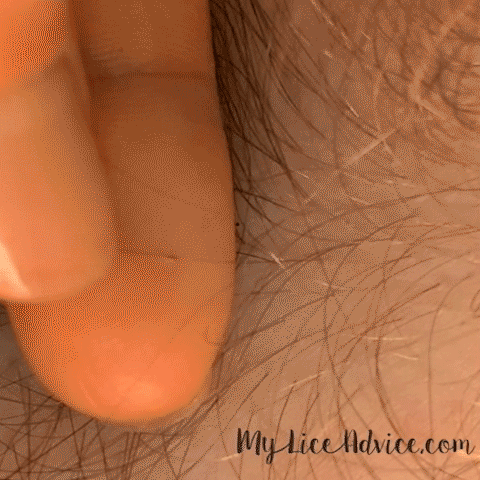
Nits in Brown Hair
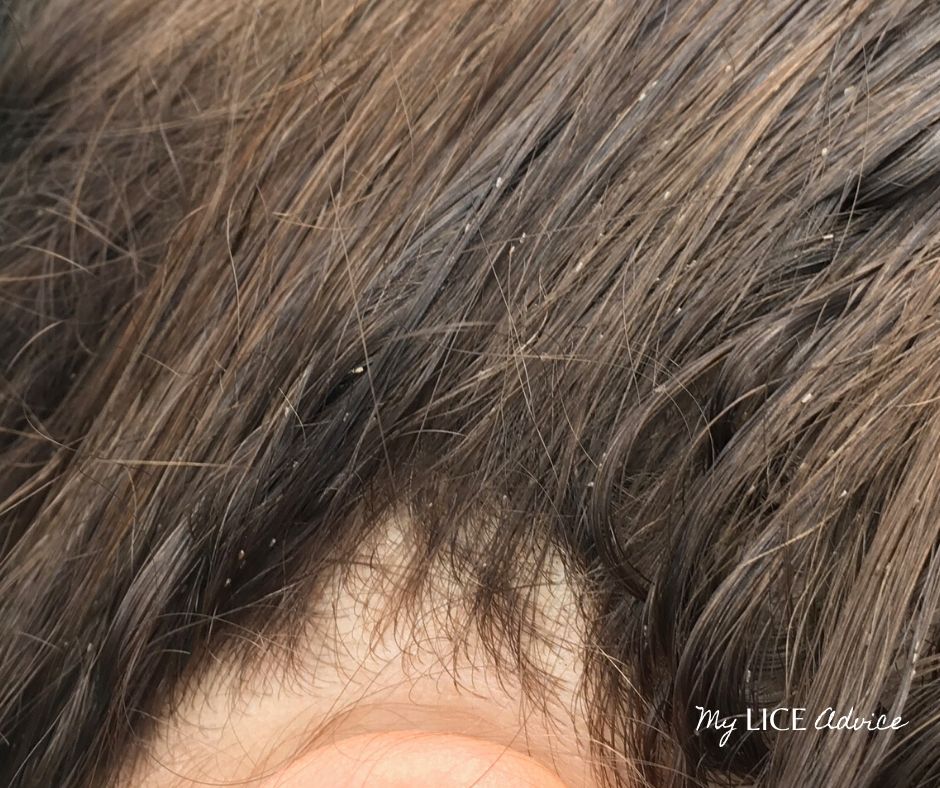
Because lice are so good at hiding and moving quickly, it is pretty rare to see lice bugs early on in an infestation. So, if you’re trying to check for lice, you should instead focus your attention on finding lice eggs (also called “nits”) in the hair.
Because nits in your child’s hair are the first sign of a lice infestation, finding them at this stage can help you eliminate lice when there are only a few adult lice bugs.
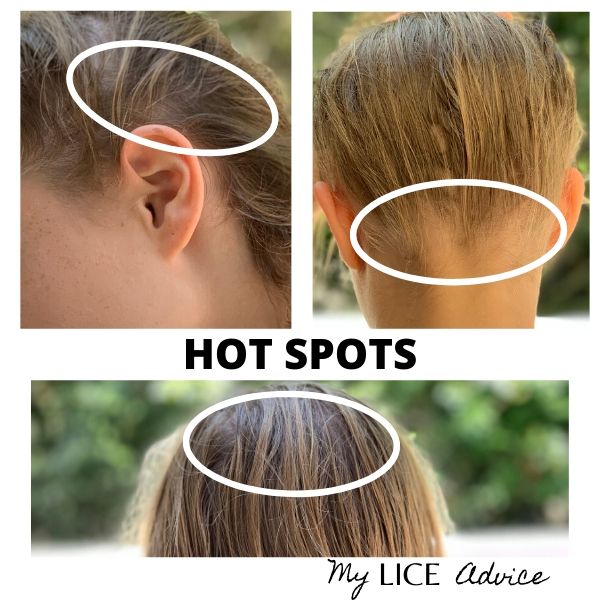
While lice lay nits throughout the entire head, there are a few places lice most love to lay eggs. These places, termed “hot spots,” are the ideal places to check for nits. These hot spots are behind the ears, the nape of the neck, and the crown of the head.
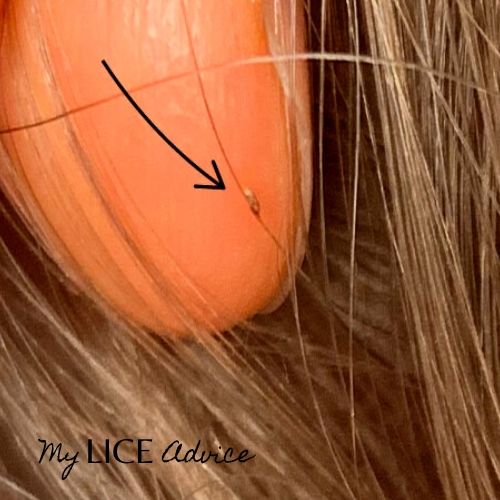
Lice eggs are about the size of a poppyseed and teardrop-shaped, not circular. They will be on the side of a single hair strand. Adult lice lay 6-10 eggs a day, so you will find multiple nits in the hair if your child has lice.
Lice eggs are stuck on the hair strand. It is impossible to brush, flick, or blow them out of the hair. The only way to remove a nit (without using a high-quality lice comb) is to squeeze it between two fingers or fingernails and then slide it down the entire hair strand, finally pulling it off the end.
This is just a brief overview; you can find a step-by-step tutorial in my article How to Check for Lice Tutorial.
Brown Nits vs. White Nits
A common misunderstanding is that nits are white. Nits have a shiny appearance and can appear white, especially in dark hair. But lice eggs vary in color from light golden to dark brown, depending on how close they are to hatching.
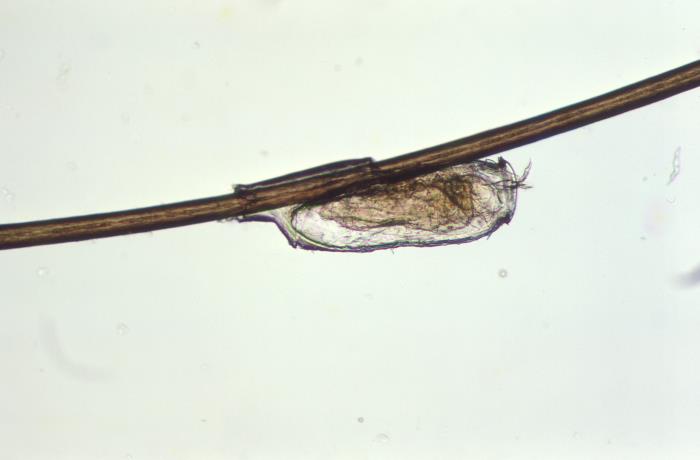
Golden
When lice lay their eggs on a hair strand, the eggs are two-toned--often a golden color with a dark brown circle inside. The dark circle on the inside of the egg is a small lice bug growing inside the egg.
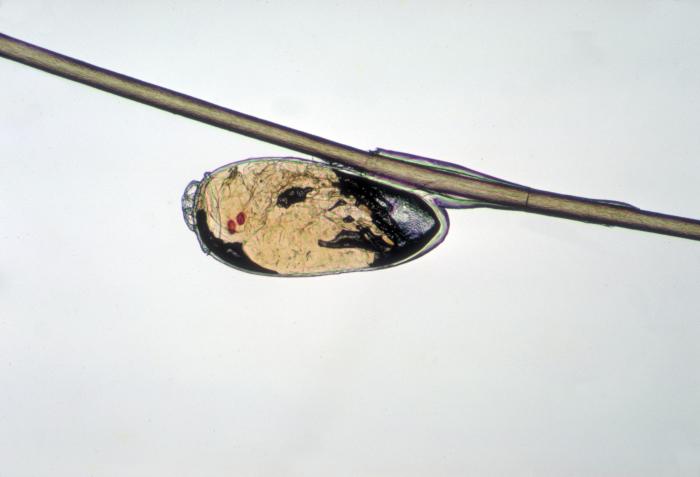
Brown/Black
Over the next few days, that lice bug grows inside the egg. As it matures and grows inside, the nit will appear darker and darker until it seems completely brown, almost black. These very dark nits are the nits that are just about to hatch.
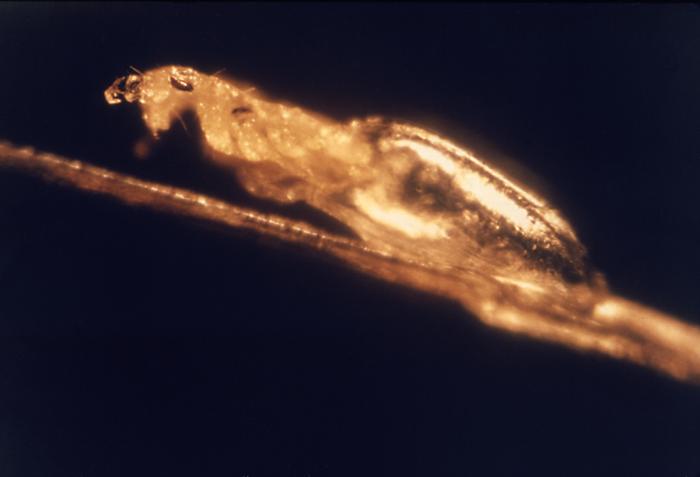
Hatching
Most lice hatch somewhere between 1-2 weeks, but this can vary greatly depending on climate and other factors.
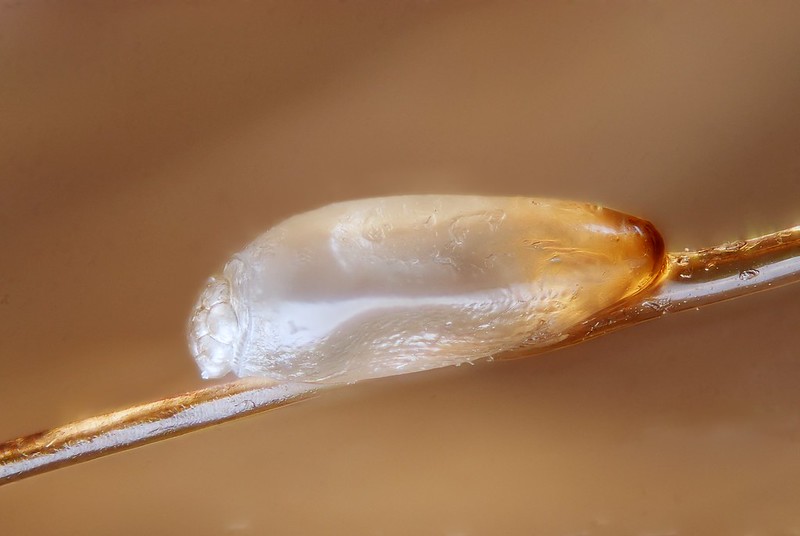
Transparent/White
After the lice bug hatches out of the egg, the eggshell remains on the hair strand. Lice eggs left over after the bug has hatched will appear to be white or translucent because all you see leftover is a shell or casing with no bug inside.
Similar to a chicken egg, after you crack open the egg and remove the insides, all you have left is a white shell.
Hatched or Not Hatched:
That is the Question
There really isn't a way to tell whether or not lice eggs are alive or dead. What you can tell is this:
- Whether or not they are hatched (meaning they no longer have a bug inside, therefore are no longer a threat).
- Whether or not they are "not yet" hatched (meaning there is still a bug inside the egg, therefore they are a threat).
Here's the way to tell the difference:
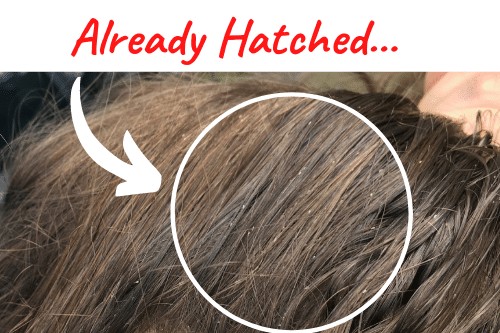
White/Clear Nits = Already Hatched
Once lice eggs are hatched they are translucent/clear in color. For those with dark hair, like the picture above, those eggs appear white in the hair.
Think of lice eggs like any other egg... once a lice bug hatches and leaves the egg all you are left with is a shell. That's what you're seeing when you see white lice eggs/nits in the hair. You are seeing an old, left over shell that is glued onto the hair, there is no bug inside of "white" lice eggs/nits. (Unfortunately those white eggs/nits won't "fall off" because they are glued to the hair strand).
Since there is not bug inside those old white lice eggs are no longer a threat.
Brown or Black Lice Eggs = Have Not Hatched Yet
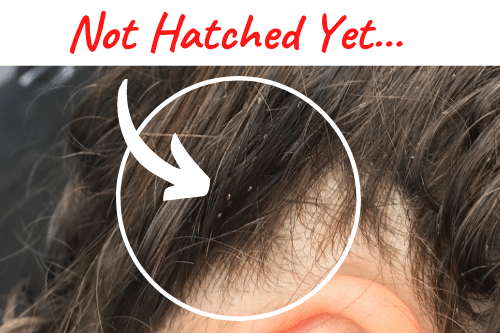
Dark lice eggs (brown or black) are your BIGGEST threat. Many mistakenly believe that these lice eggs are "dead" when the opposite is true!
When lice eggs are first laid they are a light golden color, but as the lice bug in the egg grows the darker the lice egg becomes. Think of lice eggs like bananas...the darker they are the "riper" they are. When lice eggs are dark brown or black they are "very ripe" and are just about to hatch!!
Do Lice Eggs Change Color After They Die?
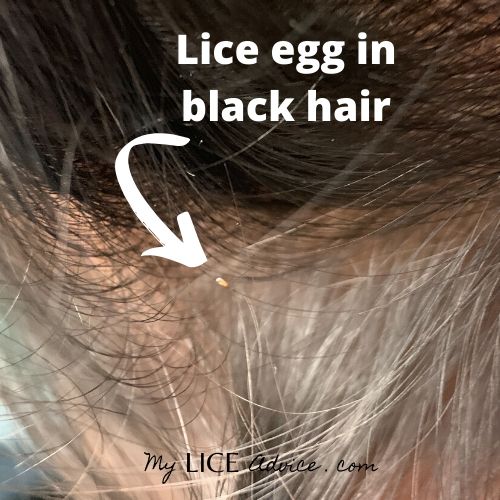
Unfortunately, many mistakenly believe that dark brown lice eggs are dead, so they don't worry about removing them from the head. As was just explained in the paragraph above dark lice eggs are NOT dead. The opposite is true! The darker the lice egg, the closer it is to hatching. If you find dark lice eggs in the hair, then you can plan on those eggs hatching within just a day or two.
Some lice kits claim to kill lice eggs. In my opinion, this is EXTREMELY misleading. Some pesticides kill a few lice eggs (I'm talking about a very small percentage of eggs on the head). And guess what? It only takes two lice eggs (one male and one female) to hatch and re-infest your child all over again! So please don't believe the lie that lice kits kill lice eggs, they do not.
I'm going to repeat this one more time clearly...
Lice eggs DO NOT turn black/brown because they are dead.... They change color (brown/black) because they are getting closer to hatching!
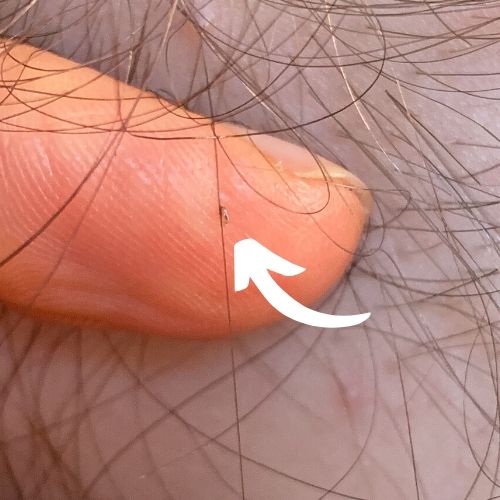
Why Is It So Hard to Get Rid of Lice?
Now that you know what you're looking for I want to talk briefly about your biggest worry (that your child actually has lice) and the question I get asked by parents around the world that have been battling lice….
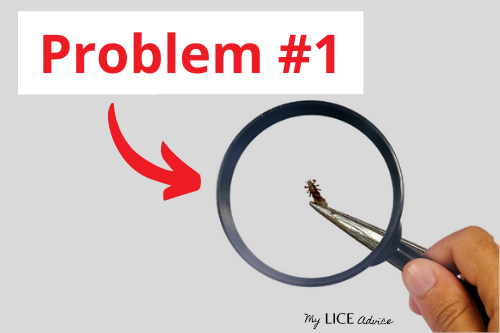
Parents around the world are all asking me the same question…. "Why is it so much harder to get rid of lice now?"
Lice have become immune to everything that used to work in the past. Perhaps you remember your mom using a typical lice treatment or mayonnaise and that doing the trick. The new strain of head lice is no longer killed by those treatments, that’s why lice today are termed by people, “super lice,” because they are immune to those treatments.
I’ve cured thousands of people of lice in my lice center and let me tell you, I don't do it with over-the-counter lice treatments.
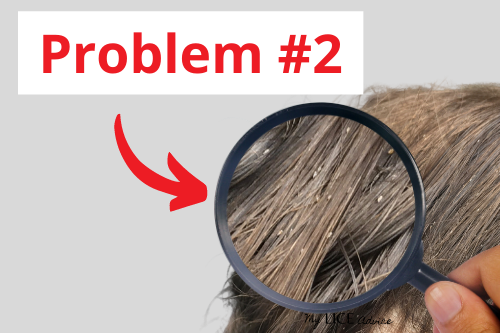
Most people struggle with lice because they focus all of their attention on killing lice bugs and not enough attention on GETTING RID OF LICE!
If you want to get rid of lice you have to address all 3 of the problems of lice:
- Lice Bugs
- Lice Eggs
- Getting Lice Back
The best way to get rid of lice is to tackle all 3 of these problems at the same time, which is what I teach in my step-by-step video system.
So, if you discover your child HAS lice, don't panic. Just head over to the video system. Follow along with the videos and you'll be done with lice by the end of the day.
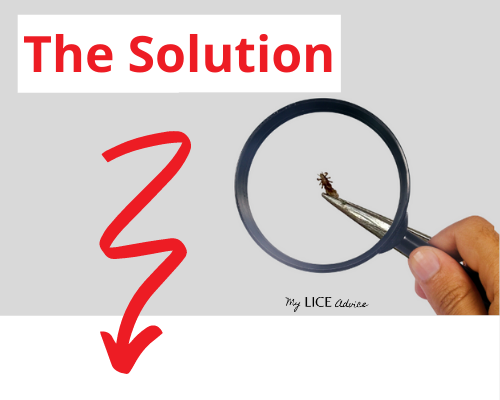

Summing It Up…
It’s not at all unusual to find brown lice and brown lice eggs. Head lice can be difficult to see because they blend in so well in the hair. The best way to check for lice in a brunette is by looking for lice eggs on the hot spots of the head. Nits can be golden, brown, or transparent, depending on how close they are to hatching. If you end up having lice, assume that it is super lice. Many parents spend hundreds of dollars and far too much of their time trying to get rid of lice with products that simply don't work. If you want to get rid of lice fast and permanently then head over to then check out my step-by-step video system.
All the best,
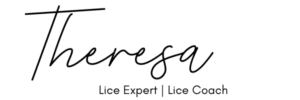

Theresa is a Registered Nurse and lice expert with years of experience curing children of lice. She owns a lice treatment center in the US which is where she perfected the Step-by-Step Video System proven to get rid of lice. She also works with government agencies and schools helping those with the worst head lice cases in America.
Her greatest passion is empowering parents by teaching parents online how to do a professional lice treatment on their child at home. She is the Lice Coach for the My Lice Advice Step-by-Step Video System.

